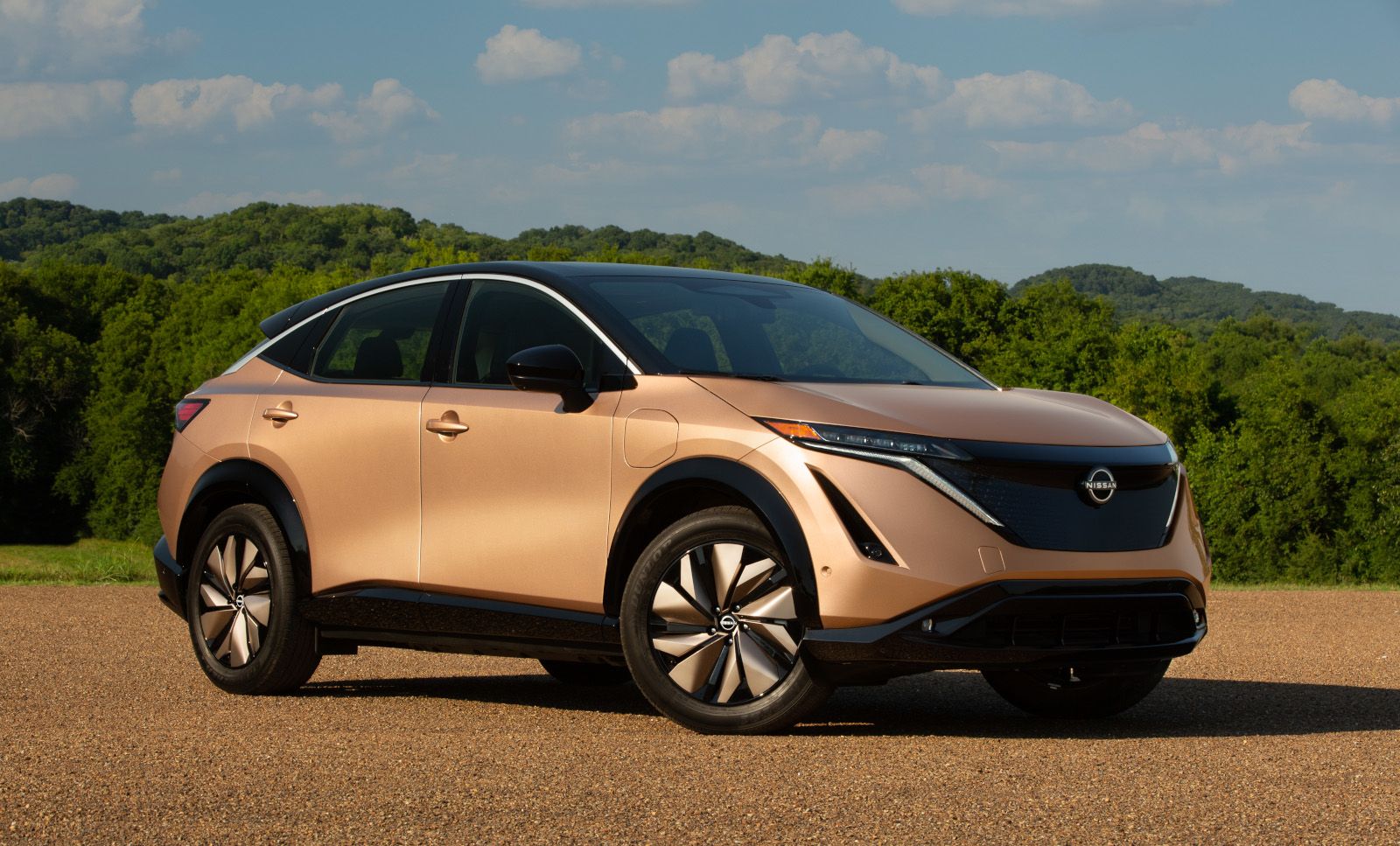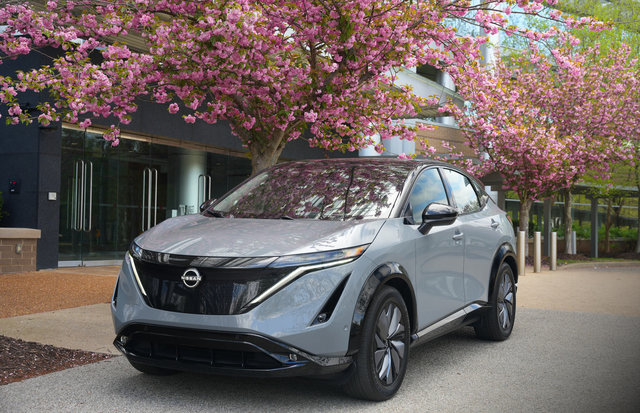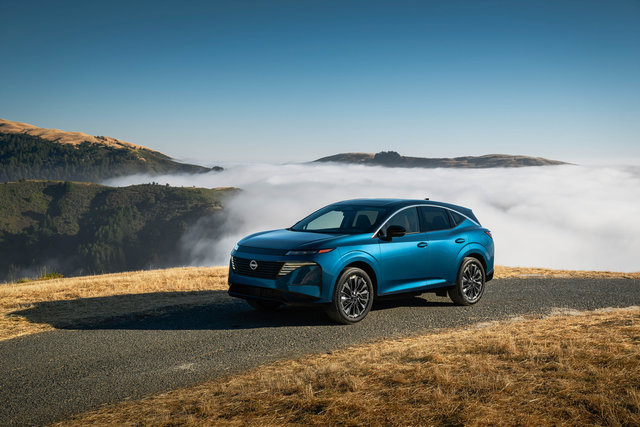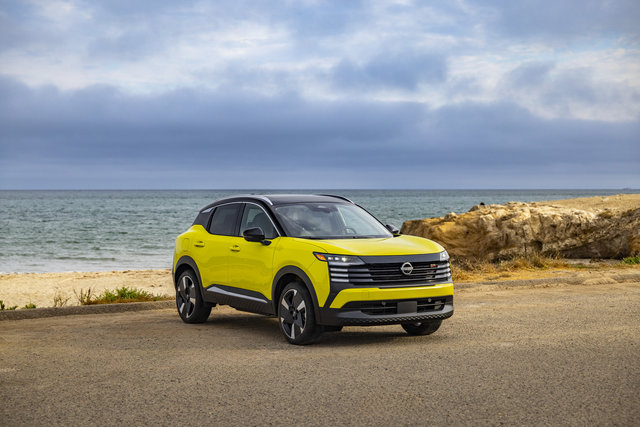Electric vehicles deliver instant torque and silent operation, but some drivers wonder about all-wheel drive capability. Traditional gas-powered AWD systems use complex mechanical components to split power between front and rear wheels. Electric vehicles take a different approach, and Nissan's e-4ORCE system represents one of the most advanced solutions available today.
This dual-motor all-wheel drive system appears on the Nissan ARIYA and provides precise torque control that mechanical systems cannot match. Understanding how e-4ORCE works helps explain why it earned recognition on the Wards 10 Best Engines & Propulsion Systems list for 2023.
How e-4ORCE Works
The "e-4ORCE" name combines "e" for electric with "4ORCE," referencing the four forces that act on a vehicle: acceleration, deceleration, cornering, and pitch/dive. The system uses two electric motors—one for the front wheels and one for the rear wheels—working together to control these forces precisely.
Unlike traditional all-wheel drive systems that rely on mechanical differentials and clutches, e-4ORCE adjusts power distribution electronically. The system can send torque to individual wheels within milliseconds, responding faster than any mechanical system. This electronic control provides several advantages:
- Instant torque delivery: No lag time between power demand and wheel response
- Independent front/rear control: Each motor operates independently for optimal traction
- Precise power distribution: Computer-controlled distribution adjusts up to 100 times per second
- Regenerative braking coordination: Both motors can recover energy during deceleration
Real-World Performance Benefits
The technical capabilities translate to noticeable improvements in everyday driving. During acceleration, e-4ORCE prevents wheel spin by instantly redirecting power to wheels with better traction. In corners, the system helps maintain stability by adjusting torque to each axle based on steering input and road conditions.
Winter driving scenarios highlight the system's advantages. On slippery surfaces, traditional AWD systems may struggle to distribute power smoothly between wheels with different traction levels. e-4ORCE responds immediately, sending power where it's needed without the hesitation common in mechanical systems.
The regenerative braking coordination provides particularly smooth deceleration. Both front and rear motors can act as generators to slow the vehicle while recovering energy for the battery. The system balances this regenerative braking to maintain stability and maximize energy recovery.
Comparing e-4ORCE to Traditional AWD

Here's how e-4ORCE differs from conventional all-wheel drive systems:
|
Feature
|
Traditional AWD
|
e-4ORCE
|
|
Response Time
|
200-500 milliseconds
|
Under 10 milliseconds
|
|
Power Distribution
|
Fixed ratios or mechanical clutches
|
Continuously variable, electronic
|
|
Maintenance
|
Multiple fluids, moving parts
|
Minimal maintenance required
|
|
Energy Recovery
|
None
|
Regenerative braking from both motors
|
|
Noise Level
|
Mechanical sounds during operation
|
Silent operation
|
|
Weight
|
Heavy transfer cases and drivelines
|
Lighter, no mechanical connections
|
The speed advantage matters most in challenging conditions. When one wheel hits ice or loose gravel, e-4ORCE responds before the driver notices the traction loss, while mechanical systems may allow wheel spin before engaging.
Available on ARIYA Models
Nissan offers e-4ORCE on several ARIYA configurations, each with different power outputs and battery sizes:
Evolve e-4ORCE: Features dual motors with combined output tailored for balanced performance and efficiency. This represents the entry point into e-4ORCE technology.
Evolve+ e-4ORCE: Uses the larger 91 kWh battery pack with enhanced dual-motor setup, providing longer range and increased power output for drivers who need maximum capability.
Both configurations include the same core e-4ORCE functionality—the differences lie in battery capacity and total system power rather than the AWD system itself.
Making the Right Choice
When evaluating e-4ORCE against single-motor front-wheel drive, consider your driving patterns and local conditions. The system provides measurable benefits in winter weather, during spirited driving, and when carrying heavy loads. For primarily urban driving on well-maintained roads, the advantages may be less noticeable.
e-4ORCE technology provides precise control that traditional mechanical systems cannot match. As electric vehicles become more common, systems like e-4ORCE show how electric powertrains can improve on conventional designs.
Curious about experiencing e-4ORCE technology yourself? Visit Fredericton Nissan to test drive the ARIYA and feel the difference that instant, precise all-wheel drive control makes.






